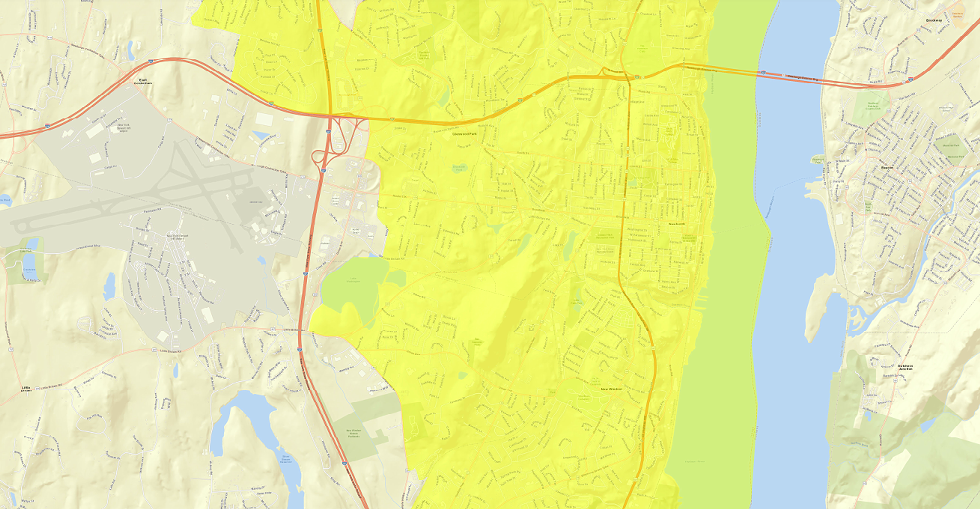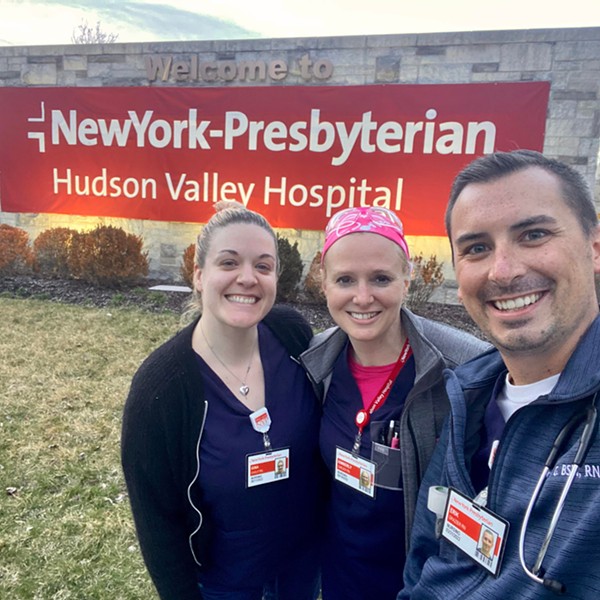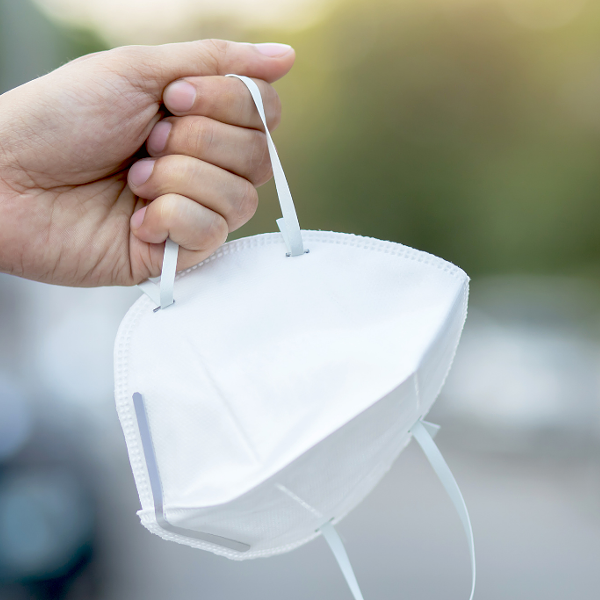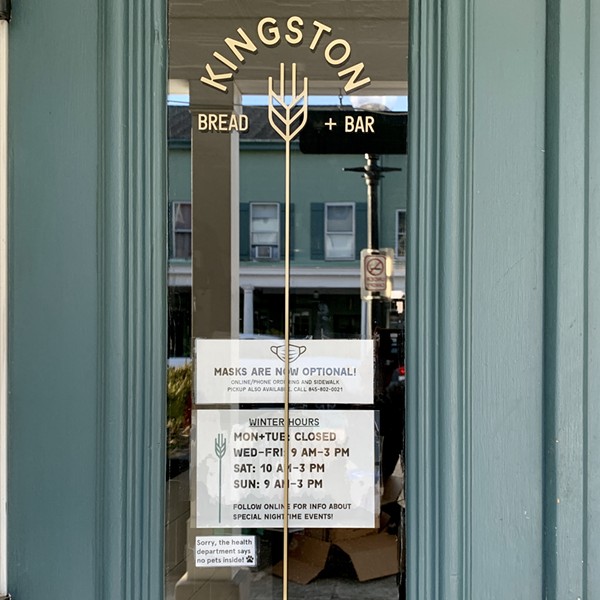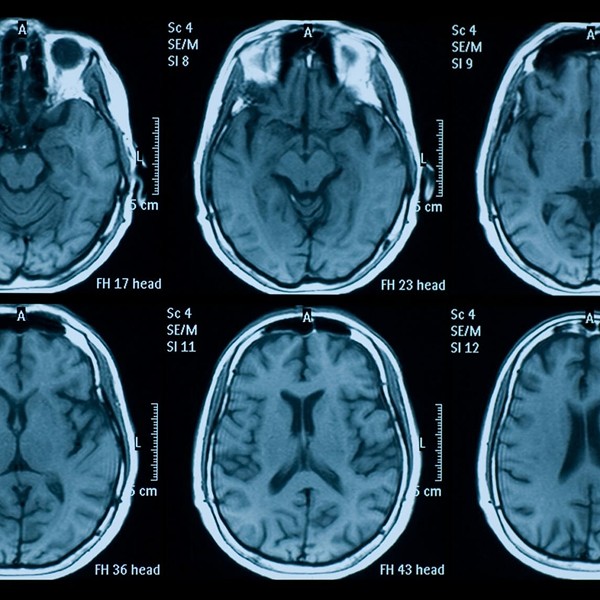This is a roundup of coronavirus news and announcements from New York State and Hudson Valley and Catskills counties for Thursday, November 19 and Friday, November 20. Published in collaboration with The Other Hudson Valley.
NEW YORK STATE
5,468 new cases yesterday
205,466 tests yesterday
Positive test rate: 2.66%
35 deaths yesterday
2,348 hospitalizations
445 ICU admissions
New York State coronavirus page
New York State official pressroom
Hotline: (888) 364-3065
Governor Andrew Cuomo declared eight new yellow zones in the Hudson Valley on Thursday, all of them in Orange and Westchester counties. The number of microcluster “focus zones” in New York has shot up over the past several weeks, along with case counts both in the focus zones and statewide. With yellow zones in Orange County’s Kiryas Joel and in the Binghamton area in Broome County being deactivated, there are now 21 active microclusters declared in New York State. Five currently have orange zones and a yellow buffer, and the rest are yellow-only “precautionary” zones.
Is New York’s microcluster strategy working? In briefings with reporters, Governor Cuomo insists that it is, and has been contrasting New York State’s lower positivity rate and per-capita case counts to other states that are facing much more devastating upswings in infection. But there are signs that the strategy is fraying, as new focus zones are added faster than recovering ones are removed. Some public health officials think a return to statewide action is inevitable: Former New York City Deputy Health Commissioner Isaac Weisfuse told The New York Times recently that “the odds are against us at this stage in terms of keeping it under control.”
Another public health expert who thinks New York’s microcluster strategy is doomed: Bill Hammond, health policy fellow at the Empire Center. A graph published Friday on Hammond’s blog shows New York’s steep autumn rise in new cases flattened only slightly after New York’s microcluster strategy was unveiled, before continuing on an even steeper rise. The “granular” data the state is using to create the focus zones is not publicly available, but Hammond notes that cases are surging statewide, and that the county with the highest infection rate—Allegany—does not have a focus zone at all. Many parts of upstate are now worse than they were in the spring, and the state hospitalization rate is worse than it has been since June. “It’s possible, of course, that all of these trends would be significantly worse in the absence of the micro-cluster strategy. So far, however, the curve has not significantly bent,” Hammond writes.
How are microcluster maps drawn? For such an important piece of the state’s strategy, it’s a bit of a mystery. In October, the state published a nine-page guidance document on how focus zones are created. There’s a lot of words and numbers in it, but the truth is, there’s a lot about the process of drawing borders that remains subjective—and closed off from reporters, the general public, and scientists who might have thoughts on how best to draw maps. Health officials are not required to follow the lines of zip codes or municipal borders in drawing maps, and can use “epidemiological factors, ZIP codes and other geopolitical or other common geographic subdivisions such as county, census tracts, or contiguous neighborhoods” to draw focus zones, a description that leaves a lot of leeway for deciding what to include. Data that health officials are using to decide where infection is hottest, including demographic data and fine-grained location data on new cases and testing, is not available to the public.
With cases expected to spike across the state after Thanksgiving, New York may soon see broad swaths of the state meet the metrics for entering a focus zone. On Friday, New York City Mayor Bill de Blasio warned that all of New York City was likely to enter orange zone territory shortly after Thanksgiving; an orange zone would close all indoor dining, along with gyms, barbershops and salons, and some other high-risk businesses.
If you’ve been keeping up with the skyrocketing numbers of cases nationwide—well above 150,000 per day now—then you probably have a good idea about the safety of travel this holiday season. On Thursday, the Centers for Disease Control and Prevention issued new guidance for Thanksgiving, urging Americans to avoid travel. “The safest way to celebrate Thanksgiving is to celebrate at home with the people you live with,” the guidelines state. Governor Cuomo struck the same tone in his Thursday briefing, saying “this year, if you love someone, it is smarter and better to stay away.” Nevertheless, the governor expects a “significant spike” after Thanksgiving.
Nurses at Albany Medical Center and Montefiore in New Rochelle are ready to strike over unsafe working conditions and stalled contract negotiations. “COVID-19 is back with a vengeance and our staffing is at critical mass. PPE, especially N95s, are being reused multiple times and now our staff members are becoming infected. These conditions put us and our patients at risk,” Albany Medical nurse Lenore Granich told the Times Union.
Nationwide, healthcare workers at even the most well-prepared hospitals are facing a surge more terrifying than anything the spring and summer have brought, The Atlantic’s Ed Yong wrote this week. Doctors and nurses have been working full-tilt, and many are exhausted—and with rates now surging across the country, there are no reserves of fresh workers from unaffected areas who can step in and help out. “We’re watching a system breaking in front of us and we’re helpless to stop it,” Nebraska critical care doctor Kelly Cawcutt told the magazine. In places where hospitals are already struggling under an onslaught of new COVID-19 patients, Yong writes, “some of the people who get infected over Thanksgiving will struggle to enter packed hospitals by the middle of December, and be in the ground by Christmas.”
Governor Cuomo will receive an International Emmy award for his COVID-19 briefings. He will receive the Founder’s Award Monday “in recognition of his leadership during the Covid-19 pandemic and his masterful use of television to inform and calm people around the world,” according to the Emmy Academy. Cuomo did 111 consecutive daily briefings from early March until mid-June that were viewed by 59 million people. Past recipients of the award include Oprah Winfrey and Al Gore. Despite the fact that the governor has already written a book about his COVID-19 leadership and is now apparently on to the television awards phase, we would like to remind readers that COVID-19 in New York is not over, and a new and acutely dangerous phase of the pandemic is just getting going.
The New York state court system is reporting a “dramatic upswing” in new COVID-19 infections among employees, the New York Law Journal reports. Some courthouses are scaling back operations.
Pfizer has applied to the FDA for an emergency use authorization for its vaccine, starting the clock ticking on the process that will eventually make the vaccine available to Americans. With FDA review still pending, limited amounts of vaccine currently available, and the first doses likely to be given to healthcare workers and those at the highest risk, it may be summer of 2021 before most Americans get vaccinated.
Among the prominent people in politics recently diagnosed with COVID-19: Florida US Senator Rick Scott, former New York US Senator Al D’Amato, Rudy Giuliani’s son Andrew Giuliani, and President Donald Trump’s son Donald Trump, Jr.
The New York Times ran an essay this week by a tech writer who traced his tiny number of personal contacts and found that his COVID-19 “bubble” actually includes more than 100 people, which is unsurprising and typical for people who work outside the house, have children who attend any sort of in-person school, or are in contact with people in these situations. Despite this, he’s apparently decided to get together with family for Thanksgiving anyway, which is why we’re linking to the Times’s story asking 635 epidemiologists what they’re doing for the holiday instead.
Microcluster Focus Zone Update
New York State’s current strategy for curbing infection involves assigning neighborhoods with outbreaks to “microcluster focus zones” that are coded red, orange, or yellow depending on severity. A guide to the restrictions on business, school, worship, and gatherings that apply to each zone color is posted on the NY Forward website. High-resolution maps of focus zones in the microclusters are also available on NY Forward.
New focus zones: On Thursday, Governor Cuomo announced eight new focus zones in the state, all in the Hudson Valley. Three new yellow zones have been declared in Orange County: one in Newburgh and New Windsor, and one each in Middletown and Highland Falls. Five new yellow zones have been declared in Westchester County: in New Rochelle, Ossining, Tarrytown, Yonkers, and Peekskill.
Better: Governor Cuomo announced on Wednesday that Broome County’s focus zone in greater Binghamton and Orange County’s focus zone centered on the village of Kiryas Joel are eligible to be removed. Changes go into effect Friday for businesses, and Tuesday for schools.
Worse: Rockland County’s existing yellow zone will be expanded to include more territory where cases and positivity rates have been rising, including Pearl River, West Haverstraw, Stony Point and Suffern.
No change: Existing focus zones will remain unchanged since Wednesday in the Bronx, Brooklyn, Chemung County, Erie County, Monroe County, Niagara County, Onondaga County, Queens, Staten Island, Tioga County, and the Westchester County village of Port Chester.
The positivity rate in all of the state’s focus zones in Thursday’s testing was 4.55 percent. The rate statewide with the focus zones excluded was 2.15 percent. Detailed recent positivity rate information for each of the state’s focus zones is available in a press release on the state website.
LOWER HUDSON VALLEY
County coronavirus pages: Rockland, Westchester, Putnam
University coronavirus pages: Sarah Lawrence, Iona, SUNY Purchase, Manhattanville, Westchester Community College, Rockland Community College, Dominican, Mercy
Westchester County Executive George Latimer provided his second coronavirus update of the week on Thursday. The county currently has 3,975 active cases of COVID-19, up by nearly 1,500 in just one week. The test positivity rate over the past two days in Westchester was 4.91 percent on Wednesday and 3.82 percent on Thursday, when the county recorded 392 new positives out of 10,253 tests—the highest number of daily tests since the pandemic began, as people seek a diagnosis before traveling for Thanksgiving.
With cases surging and new microcluster zones emerging in Westchester, the county is redoubling its efforts to reach local Spanish speakers in their native language with a new series of ads, robocalls, flyers, and PSAs. A press release issued by the county says that cases are spiking in Spanish-speaking communities. The new PSA can be viewed on YouTube, along with a longer Spanish-language informational video.
The City of Peekskill will vote Monday on whether or not to exceed the state tax cap to support the 2021 budget, LoHud.com reports. “The economic impact of the coronavirus has been compared to the Great Depression,” City Manager Andy Stewart wrote in his budget message to the public. A budget within the state tax cap is limited to a 0.67 percent increase; Peekskill’s council is considering raising the tax rate by 2.79 percent, for a 3.46 percent overall increase. That would cause property taxes to rise by $83.44 next year for an average single-family home.
On Friday, Putnam released an updated case dashboard for the first time in two weeks. The county has 160 active cases and four people hospitalized. On Thursday, mid-Hudson regional officials, including Putnam County Deputy County Executive Tom Feighery, issued a statement imploring residents to not “get casual about COVID,” warning that small gatherings even among friends and family members “have led to a recent increase in local COVID-19 cases, raising the Mid-Hudson region’s positivity rate, affecting the ability of schools and businesses to remain open and further stressing the region’s healthcare resources.”
Putnam Hospital plans to lay off 13 nurses and warns that more staff cuts could be coming due to pandemic-related financial struggles. According to the New York State Nurses Association, the union representing the hospital’s nurses, the majority of the affected nurses work in telemetry and were “critical in fighting the first COVID surge.” NYSNA called the layoffs a “disgrace.”
Putnam County issued four public health alerts for possible COVID-19 exposure on Thursday:
- ShopRite Supermarket in Carmel (184 Route 52) on Thursday, November 12 from 11am to 5pm;
- Mahopac Golf & Beach Club (601 North Lake Boulevard) between 10:30am and 4pm on Thursday, November 12; Friday, November 13; and Saturday, November 14;
- The Home Depot in Brewster (80 Independent Way) on Saturday, November 7 from 10am to 11am;
- Ministerio Internacional Campamento De Jehova church in Mahopac (407 Route 6) on Sunday, November 15 from 7:30am to 12pm.
The MTA is weighing a range of options to make up major budget deficits, including fare hikes on the Metro-North and toll increases for bridges and tunnels. In the agency’s “worst-case budget scenario,” LoHud.com writes, commuter rail tickets would rise by 4 percent next year, double the 2 percent increase planned as part of the agency’s every-other-year fare hike schedule.
MID-HUDSON VALLEY
County coronavirus pages: Orange, Dutchess, Ulster, Columbia
University coronavirus page: Bard, Vassar, Marist, SUNY New Paltz, SUNY Ulster, Columbia-Greene Community College, SUNY Orange
Three new yellow zones were declared in Orange County on Thursday. The first is centered around Newburgh, the second is centered in the city of Middletown, and the third covers the northern part of Highland Falls.
Five out of 17 nursing homes in Orange County have residents who have tested positive for COVID-19, Orange County Executive Steve Neuhaus said in Friday’s briefing. Neuhaus also reminded residents that this weekend marks the beginning of the regular deer hunting season: “If you hear gunshots, it’s not part of the apocalypse of 2020, it is white-tailed deer hunting,” he said. “If you’re not from here, you probably don’t know what the hell is going on when you hear a gunshot.”
The City of Middletown voted Thursday to impose a mask mandate with fines of between $100 and $500, or up to 15 days in jail, for violations. Mayor Joseph DeStefano said the law was intended to target repeat offenders, who would be initially given warnings. Those over the age of six must wear masks when within six feet of others when in public, according to the law. Assemblywoman Aileen Gunther sat in on the unanimous city council vote to show support.
The City of Hudson issued a stay-at-home order late Thursday as cases spiked within the community of 6,000. Between October 30 and November 13, 15 residents had COVID-19, or about 20 percent of all cases since the beginning of the pandemic, according to the advisory. The city “strongly advises residents to stay inside their homes and avoid interaction with people outside their household,” and to avoid traveling except for work, school or essential needs.
Columbia County released its weekly town-by-town list of cases Friday, revealing the first case in two nursing homes: Ghent Rehabilitation and Nursing Facility and The Fireman’s Home. The town with the most new cases was Greenport, with 16, according to a tabulation by The Gossips of Rivertown.
The Bank of Greene County branches in Hudson and Greenport have closed because of a positive COVID-19 case, the bank said in a statement Friday.
At least eight school districts in the mid-Hudson Valley are going remote early for Thanksgiving Break because of confirmed COVID-19 cases, according to the Poughkeepsie Journal.
Two students and two teachers have tested positive for COVID-19 in the Taconic Hills School District, the district announced Friday, and 19 students and staff are now under mandatory quarantine. The Germantown Central School District will go remote next Monday and Tuesday because “a couple” of staff members are exhibiting symptoms and are undergoing testing.
Columbia County’s health director believes Turkey Day could push the county’s positivity rate above 3.5 percent, which allows it to be designated a yellow zone. The county’s seven-day rolling positivity rate reached 2.4 percent Thursday, but health director Jack Mabb predicted it would jump after the holiday. “It’s getting a little scary. We’re not there yet, obviously, but we’re rising. The most concerning thing is that it is all community spread,” he told The Register-Star. The county also saw its 45th resident die of COVID-19, the Department of Health announced Thursday. Eight of the residents have died since cases began trending upwards in the county just over a month ago.
Vassar Brothers Hospital and MidHudson Regional Hospital in Poughkeepsie both told the Poughkeepsie Journal they are in a better position than they were during the spring wave in part because they have both stockpiled the now-mandated 90-day supply of PPE. However, both said it was a “moving target.” Vassar Brothers President Peter Kelly said the hospital worked with multiple suppliers, and it wasn’t uncommon to receive a partial order. Both hospitals admitted they have had COVID-19 exposures they’ve had to contain, with Vassar Brother’s occurring recently.
Ulster County is significantly limiting access to government buildings, with the Department of Motor Vehicles moving to by-appointment service only, according to a press release sent to reporters. The county’s in-person workforce will be limited to essential staff plus 25 percent additional support staff through the end of the year.
CATSKILLS
County coronavirus pages: Sullivan, Delaware, Greene, Schoharie
University coronavirus pages: SUNY Cobleskill, SUNY Delhi, SUNY Sullivan
Greene County officials are warning residents who dined at the Barnwood Restaurant in Catskill they may have been exposed to COVID-19. Anyone who dined in the restaurant on Tuesday, November 17 from 12:30pm to 2pm should monitor for symptoms and isolate until they can be tested if symptoms are observed. No servers have tested positive, according to the county.
Cases are rising rapidly once again in Greene County, roughly a week after the recovery of COVID-19-positive inmates in the Greene Correctional Facility temporarily brought the county’s numbers down. Active cases currently stand at 46 as of Friday, up from 28 on Wednesday.
On Friday evening, Sullivan County officials issued an exposure alert for the Arnold House in Livingston Manor. A person who tested positive for COVID-19 on Friday ate at the restaurant on November 15 between 11am and 1pm “during their infectious period,” county officials said in a press release. “Although we believe that the employees wore masks routinely, many customers may not have been doing the same while seated at tables, and may have been exposed,” said county health director Nancy McGraw. “If someone thinks they have been exposed and develops symptoms, they should self-quarantine for 14 days and call their healthcare provider if symptoms develop, or call Sullivan County Public Health Services at 845-292-5910.”
On-the-ground local reporting and analysis has never been more important, and that’s what The River aims to provide. But we need your help to continue the work we’re doing. Will you support our journalism today?
OF INTEREST?
The River has a guide on where, how, and when to get tested for the coronavirus in the Hudson Valley and Catskills. To read more of our coronavirus coverage, visit our coronavirus page.
The River is collaborating with WGXC to announce these updates over the air. To listen, tune in to 90.7 FM at midnight, 5am, 7am, or 9am, or visit the audio archive online.
La Voz, una revista de cultura y noticias del Valle de Hudson en español, está traduciendo estos resúmenes y co-publicandolos en su página web. Leyendo aqui. También puede escuchar actualizaciones diarias por audio en el show “La Voz con Mariel Fiori” en Radio Kingston.







